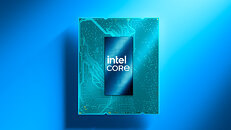- Joined
- Aug 19, 2017
- Messages
- 2,959 (1.06/day)
Intel's "Bartlett Lake-S" architecture, previously only offered for edge and networking deployment, may spawn a 12 P-core variant for gamers that eliminates efficiency cores entirely. This hopeful configuration would specifically target applications that benefit from consistent single-threaded performance and deterministic core behavior, addressing a market segment underserved since Intel's transition to hybrid architectures. Recent software support developments strengthen this speculation, with diagnostic utility AIDA64 explicitly adding "improved support for Intel Bartlett Lake-S CPU" in its 7.65.7404 beta release notes from April 13, 2025. This update precedes any consumer launch announcement, suggesting possible platform expansion. MSI-affiliated overclocker Toppc amplified these rumors by highlighting the AIDA64 changelog while referencing undisclosed developments under NDA, a pattern historically preceding consumer product launches.
The rumored gaming-oriented CPU would leverage the LGA 1700 platform compatibility, enabling drop-in upgrades for existing 600-series and 700-series motherboard owners. Unlike the current flagship Core 7 251E with its 8P+16E configuration, a pure performance-core implementation would eliminate the Windows scheduler complications that sometimes impact frame timing in latency-sensitive games. Current hybrid designs force game engines to navigate complex thread scheduling across heterogeneous cores, with performance-critical threads occasionally migrating to efficiency cores during intensive scenes. A homogeneous 12 P-core architecture would eliminate this behavior, providing stable thread assignment and potentially reducing the 99th percentile frame time variances that affect perceived smoothness in CPU-bound titles.

View at TechPowerUp Main Site | Source
The rumored gaming-oriented CPU would leverage the LGA 1700 platform compatibility, enabling drop-in upgrades for existing 600-series and 700-series motherboard owners. Unlike the current flagship Core 7 251E with its 8P+16E configuration, a pure performance-core implementation would eliminate the Windows scheduler complications that sometimes impact frame timing in latency-sensitive games. Current hybrid designs force game engines to navigate complex thread scheduling across heterogeneous cores, with performance-critical threads occasionally migrating to efficiency cores during intensive scenes. A homogeneous 12 P-core architecture would eliminate this behavior, providing stable thread assignment and potentially reducing the 99th percentile frame time variances that affect perceived smoothness in CPU-bound titles.

View at TechPowerUp Main Site | Source






